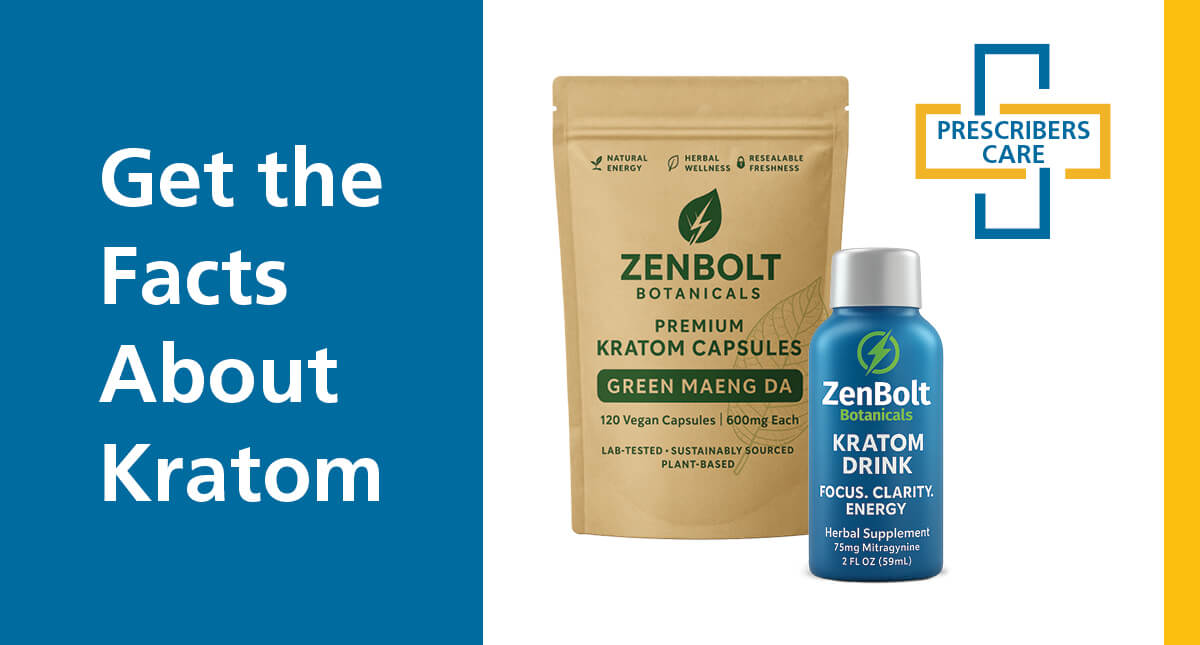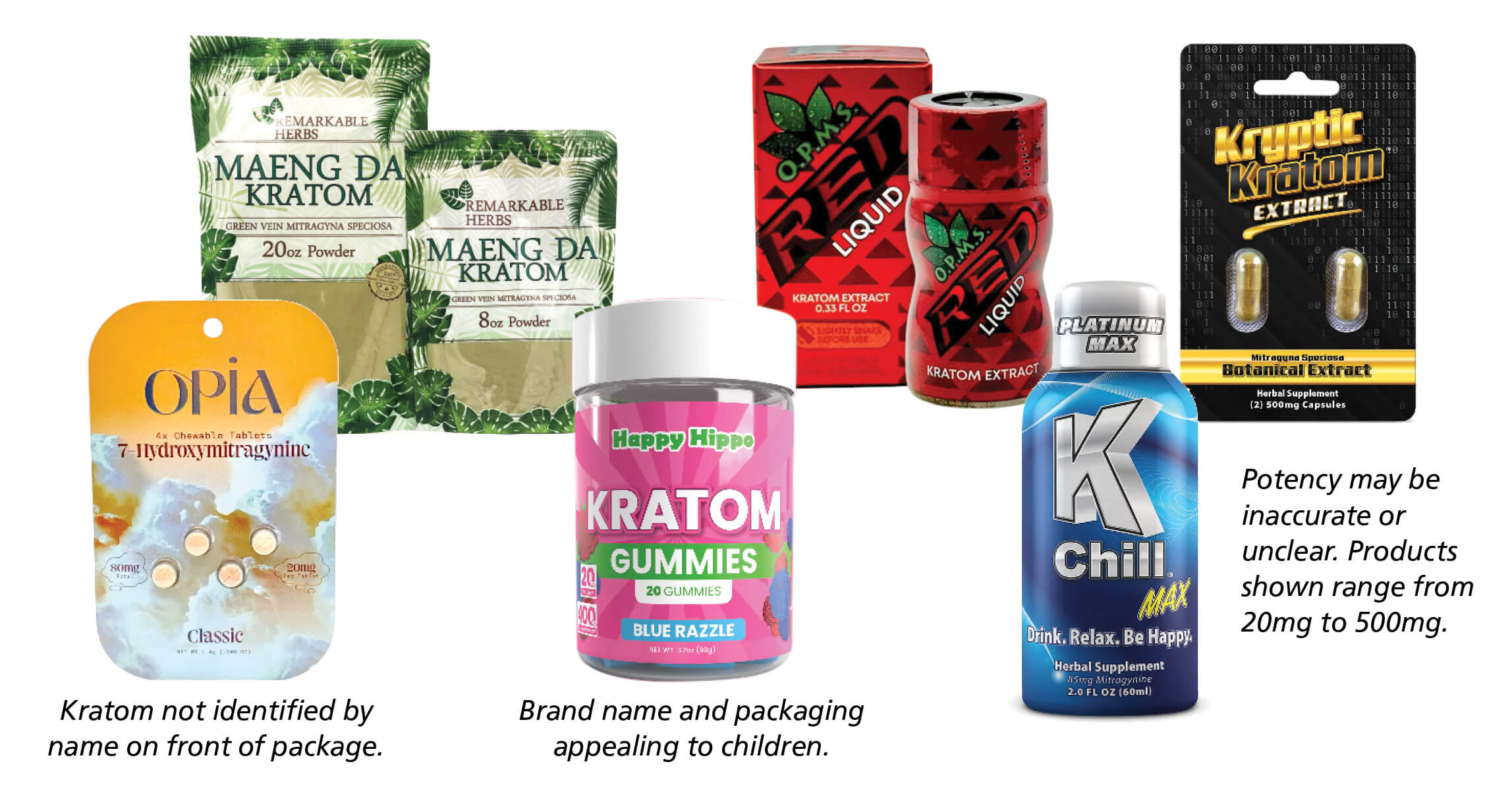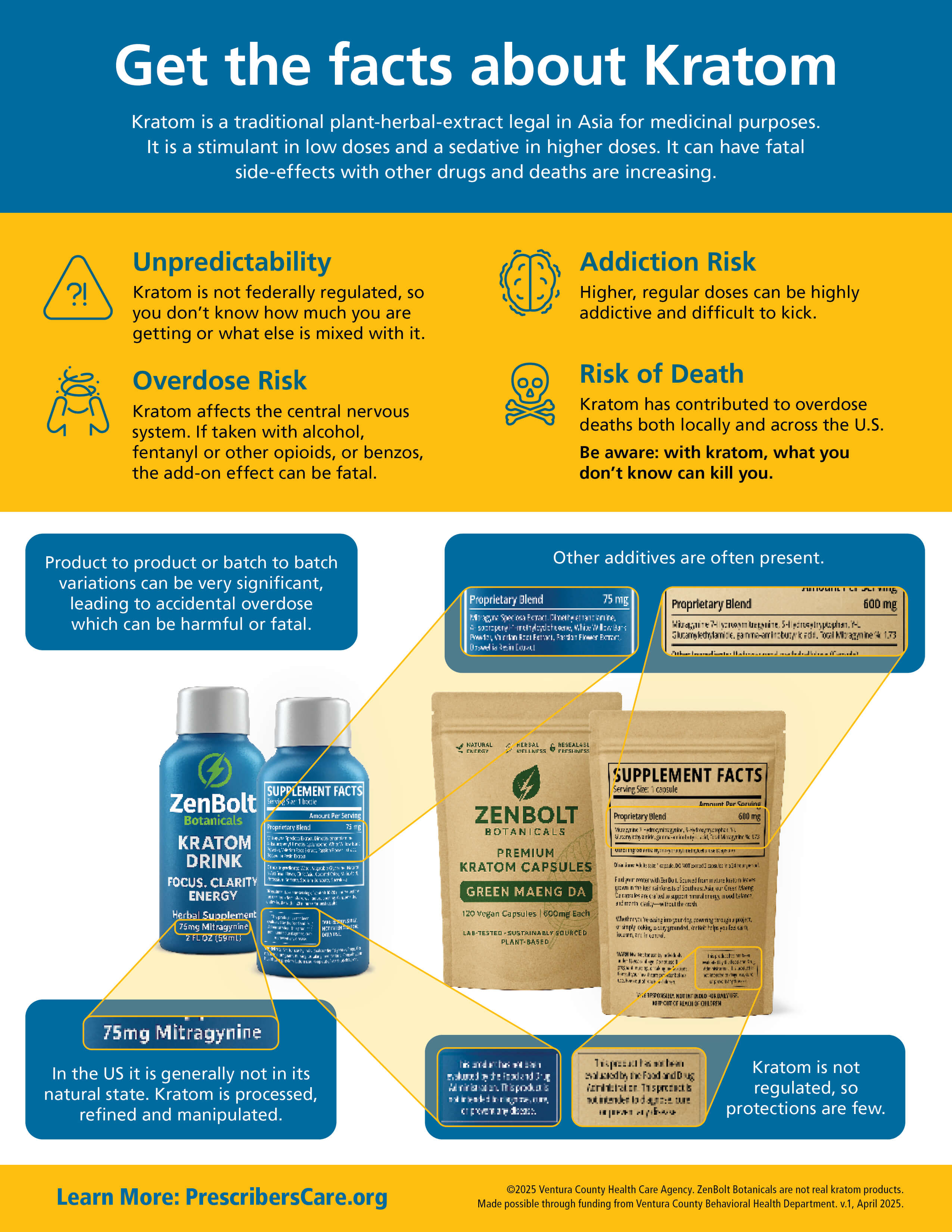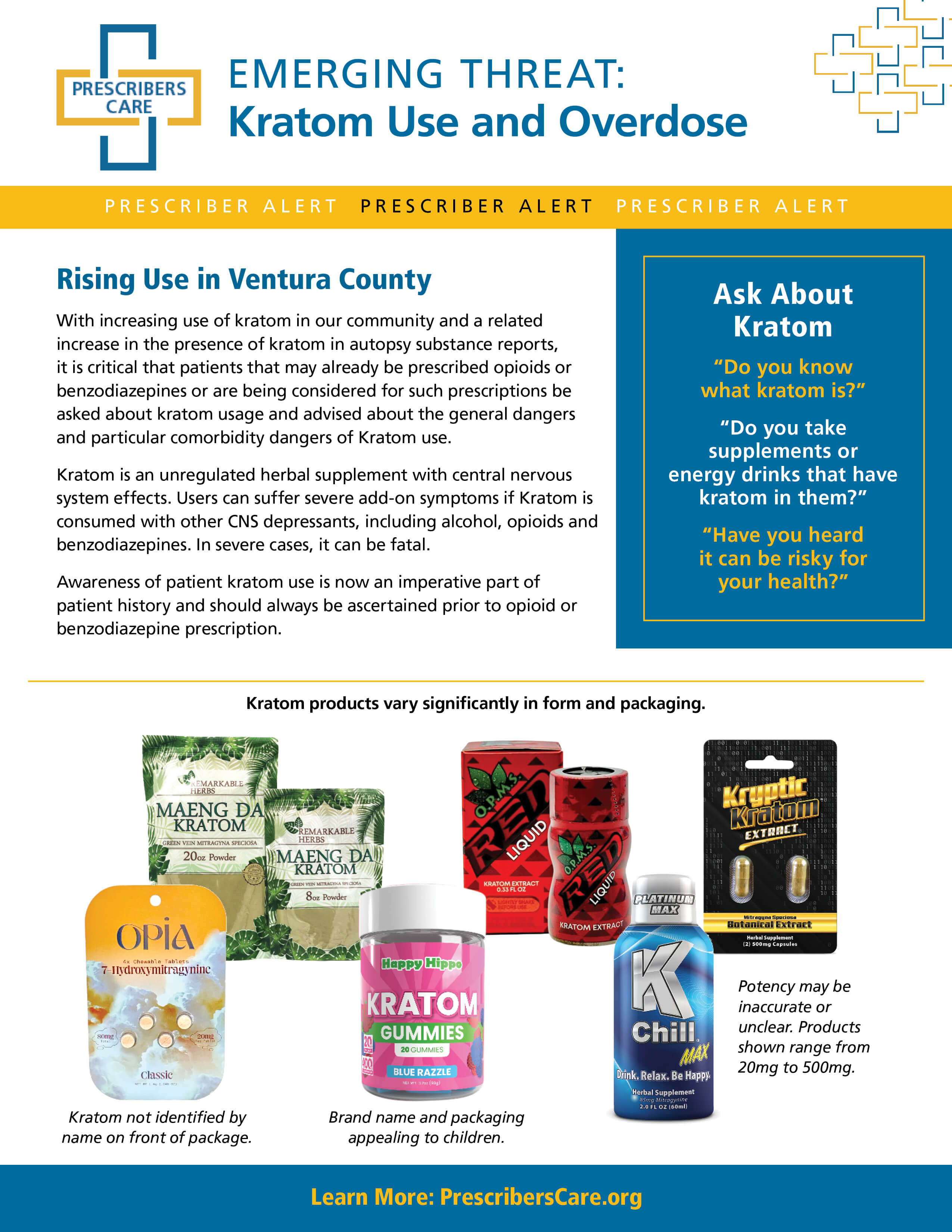
EMERGING THREAT: Kratom Use and Overdose
Rising Use in Ventura County
With increasing use of kratom in our community and a related increase in the presence of kratom in autopsy substance reports, it is critical that patients that may already be prescribed opioids or benzodiazepines or are being considered for such prescriptions be asked about kratom usage and advised about the general dangers and particular comorbidity dangers of Kratom use.
Kratom is an unregulated herbal supplement with central nervous system effects. Users can suffer severe add-on symptoms if Kratom is consumed with other CNS depressants, including alcohol, opioids and benzodiazepines. In severe cases, it can be fatal.
Awareness of patient kratom use is now an imperative part of patient history and should always be ascertained prior to opioid or benzodiazepine prescription.
Ask About Kratom
“Do you know what kratom is?”
“Do you take supplements or energy drinks that have kratom in them?”
“Have you heard it can be risky for your health?”


Kratom FAQs
What is kratom?
Kratom is a traditional herbal extract, legal in some Asian countries for medicinal purposes. Its psychoactive substances are mitragynine and 7-hydroxymitragynine. It is a stimulant in low doses and a sedative in higher doses. In the US it is generally not in its natural state. It is processed, refined and manipulated. Other additives are often present.
Is kratom an opioid?
Yes, kratom is an atypical opioid. As such, risks similar to opioid use including addiction and CNS depression are present.
Is kratom safe?
Kratom may have potential as a legitimate replacement for opioids in an appropriate controlled medical setting, but it is not free of side effects, which can be lethal in conjunction with other CNS depressants. Further, retail preparations are not of pharmaceutical quality. It is also clear that kratom has addictive properties.
Where is kratom sold? How do people ingest kratom?
Kratom is sold online and in smoke shops, convenience stores, grocery stores and gas stations, usually as a capsule, powder or liquid.
Why do people use kratom?
Kratom, at varying levels, is used for energy boosts, stress relief and/or as an analgesic. It is marketed as being a natural supplement with no known side effects (which is untrue).
Does the FDA regulate it?
Kratom is not regulated by the FDA. As such it can be very difficult to know the dosage across brands and batches. Some states and some cities have banned or restricted usage. Others are considering such legislation.
What level of use is a concern?
Product to product or batch to batch variations can be very significant and may lead to accidental overdose. Higher, regularly consumed doses can be highly addictive and have significant withdrawal symptoms.
Can a kratom user build up tolerance?
Yes. Tolerance can develop quickly, requiring higher dosage for similar effects. However, higher dosages may cause other health issues and increase the risk of addiction.
What are the symptoms of kratom withdrawal?
As an atypical opioid, Kratom withdrawal symptoms can be very similar to other opioids and very difficult to manage without assistance.
How is kratom withdrawal managed?
No evidence-based treatment for Kratom addiction has been established. However, replacement-therapy with buprenorphine is considered a reasonable approach. (Settle AG, Yang C. A Case of Severe Kratom Addiction Contributing to a Suicide Attempt. Cureus. 2022 Sep 28;14(9):e29698. doi: 10.7759/cureus.29698. PMID: 36321032; PMCID: PMC9616552.)
Does naloxone reverse kratom-involved overdoses?
Naloxone will reverse the opioid-driven symptoms of overdose.
Download PDF – Get the Facts about Kratom Patient Handout
RESOURCES
Flow chart: Troubleshooting Treatment of Opioid Use Disorder in Ventura County
PrescribersCare.org: Patient handout about kratom and comprehensive resources
UCSF National Clinician Consultation Center
(855) 300-3595
Consultation available Monday–Friday, noon – 11pm PT
nccc.ucsf.edu/clinician-consultation/substance-use-management


